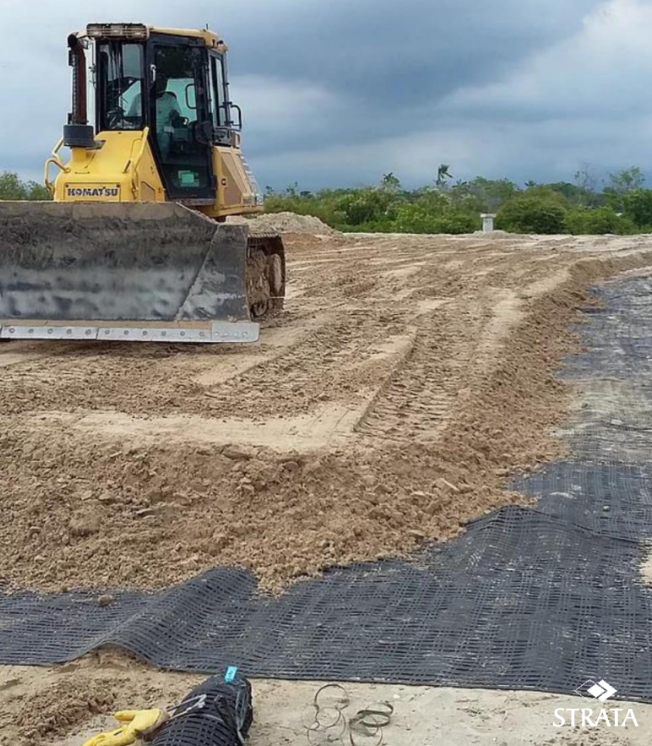What is mechanical soil stabilization? Mechanical stabilization of the soil has been accepted as part of civil engineering soil improvement works in construction to meet the requirements. It increases the soil’s shear strength, durability, and load-carrying capacity to meet different structural demands. Therefore, mechanical stabilization supports the soil material to provide a safe foundation for… Continue reading Mechanical soil stabilization
Category: Glossary Term
Glossary Term
Leachate
What is leachate? Leachate is a form of pollution that results from the interaction of water with solid waste materials; normally, it is found in municipal landfills. This liquid results from physical, chemical, or biological transformations that occur during disposal through contact with waste materials with water or other fluids. Leachate, often toxic and hazardous… Continue reading Leachate
Landfill expansion
What is a landfill? A landfill is an engineered site designed for the safe disposal of waste materials, preventing environmental contamination. Landfills manage both non-hazardous and hazardous waste, with specific measures to contain and neutralize hazardous substances over time. The uses of landfills are diverse and critical. These are used for managing residential, commercial, and… Continue reading Landfill expansion
Landfill capping
What is landfill capping? Landfill capping is a process of placing a protective cover over a landfill once it has reached the end of its operational life. Alternate terms used for landfill capping is closure capping or final capping. The main purpose of landfill capping is to set apart and contain the waste within the… Continue reading Landfill capping
Installation stage
The importance of geosynthetics installation Effective geosynthetic installation is the systematic and careful process of deploying geosynthetic materials in civil engineering projects. Notably, improper installation techniques lead to significant issues, including structural failure, reduced efficacy of drainage systems, and environmental hazards. Hence proper installation guarantees the efficiency and longevity of geosynthetics, thus safeguarding the investment… Continue reading Installation stage
Infill material
Introduction In civil engineering, infill material plays a very crucial role. The fact that infill materials can be made from a wide variety of items, affects the overall structure of the buildings. With technological advancement, civil engineers can select the infill material according to their project needs and requirements. What do you mean by the… Continue reading Infill material
High strength geogrids
What does high-strength geogrids mean? High-strength geogrids are vital components of most contemporary construction work, especially in the projects that require reinforced soil or stability under load across structures like roadways, retaining walls, and embankments. These grids are specialized materials used to enhance the application of several civil engineering structures including roadways, retaining walls, and… Continue reading High strength geogrids
Heavy axle loads
What is a heavy axle load? Axle load is the amount of weight a single axle can bear. When the weight on any one axle exceeds the standard or legal limits given, it’s referred to as a heavy axle load. Effectively managing axle loads is essential to reduce damage to both soil and infrastructure, as… Continue reading Heavy axle loads
HDPE pond liner
Definition of HDPE pond liner A HDPE pond liner is not just a protective, impermeable geosynthetic membrane for ponds. It also safeguards the sides and bottom of other water reservoirs and containment structures, showcasing its versatility and wide range of applications. The synthetic material for manufacturing the liners makes them robust, durable, high-strength, flexible and chemical… Continue reading HDPE pond liner
Haul roads
When large -scale construction or managing industrial projects, ensuring the integrity of the ground under heavy machinery is a given. Haul Roads are specifically designed to remove this concern. They provide a strong, stable surface to drive vehicles, which prevent damage to the underlying area. In this article, let’s learn more about the roads. What… Continue reading Haul roads



